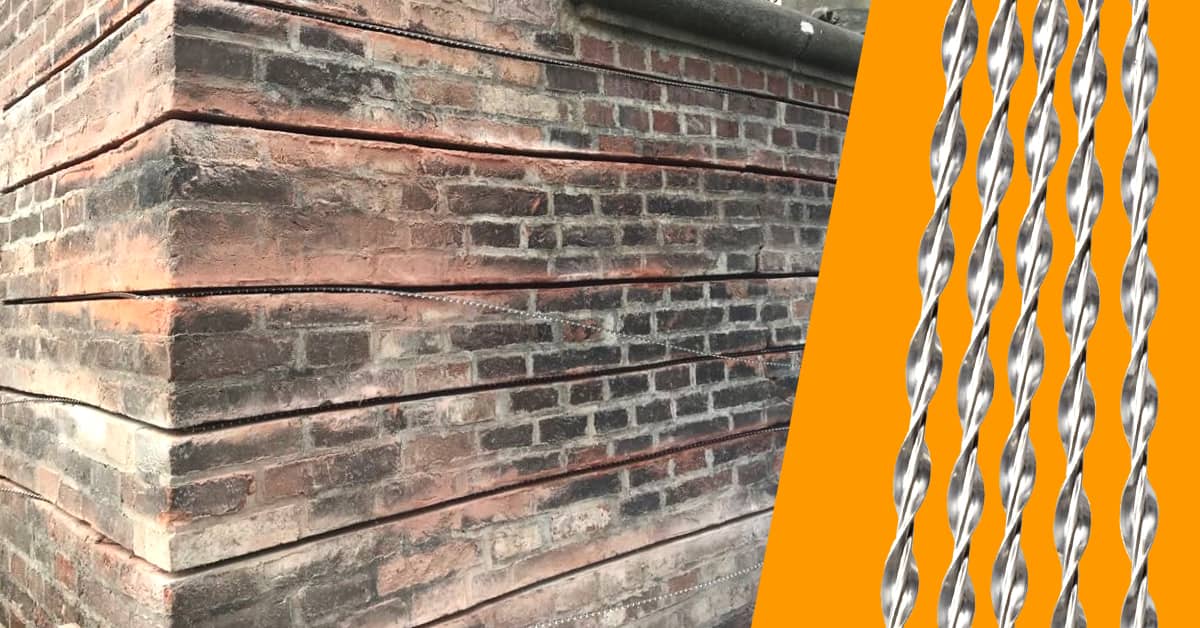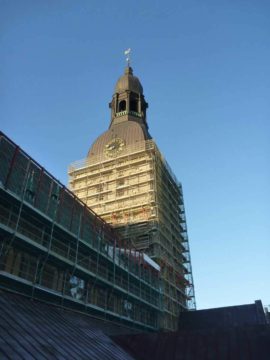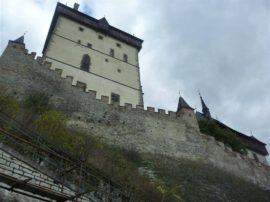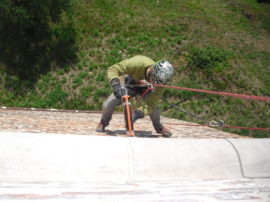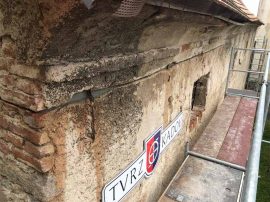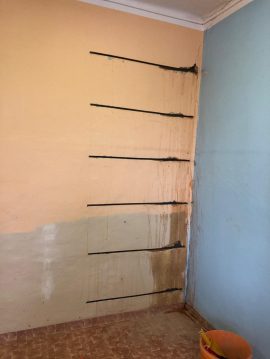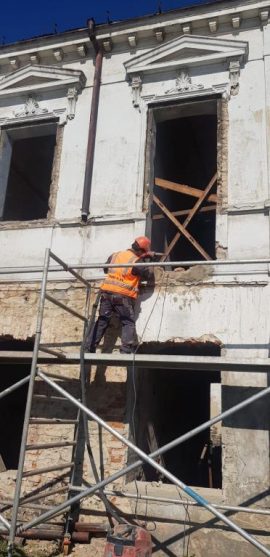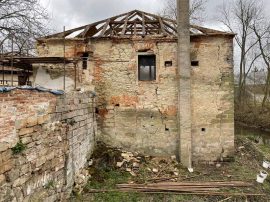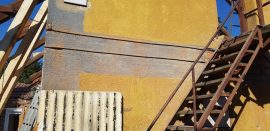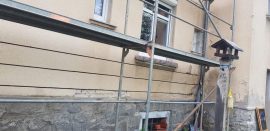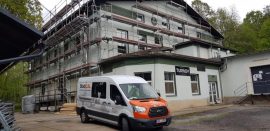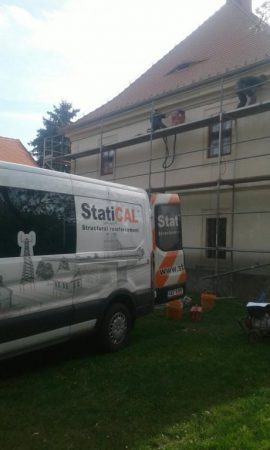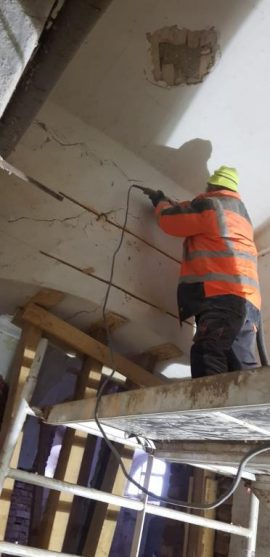STATIbar additionally glued-in helical bar has been developed to deal with defects of building structures of static nature. Currently, this system is used as a support for masonry structures, composite and stone walls, and it supports and repairs cracks and defects of concrete structures.
STATIbar drawbars are supplied in lengths up to 10 m; they may be inserted separately or in several pieces in a single channel. This method of use enables to create glued-in crowns, head-blocks and beams. Individual 1 m bars inserted in separate channels is called crack stitching.
Glued-in crowns in the masonry without the need of roof lifting.
Where a collapse of the roof structure occurs (new roof covering, decay of crossbeams), the masonry wall is often cracked just below the roof in case of crown absence. The STATIbar system may be used herein, inserted in milled channels – two pieces in a single channel in two layers.
Glued-in beam above cracked head-blocks of construction openings.
To transfer the pressure in the opening head-block that caused cracks, a glued-in support is used in milled channels - two pieces in a single channel in two layers above the opening.
Glued-in beam for distribution of the point load of micro-piles.
Where the loss of foundation load capacity occurs and STATIpile micro piles need to be applied. Micro piles transfer the point load to the masonry. To distribute these forces over the total masonry wall length, we use the STATIbar system inserted into milled channels – two pieces in a single channel in two layers above the head of micro-piles.
Stitching cracks
gluing the support over cracks
What are helical bars?
Helical bars (also known as helical ties or helical reinforcements) are circular steel bars with a helical thread on the surface. They are used in construction to provide additional reinforcement to a structure, such as a wall or column, to improve its strength and stability.
Do helical bars work?
Helical bars do work as a reinforcing material, as they can effectively transfer load and resist lateral forces, such as wind and seismic forces. They are often used in conjunction with other reinforcing materials, such as steel mesh or fiber-reinforced polymer, to provide a comprehensive reinforcement solution.
How do you install Helifix bars?
To install helical bars, you will need to drill holes into the structure that you want to reinforce. The helical bars are then inserted into the holes and secured in place using a torque-controlled installation tool. The installation process may vary depending on the specific application and the type of helical bars being used.
ŠTÍTOVÁ STĚNA VOLNĚ STOJÍCÍ – PODĚBRADY
HAVLOVA KNIHOVNA – LORETÁNSKÉ NÁMĚSTÍ
VYŠEHRAD
ZÁMEK JEZEŘÍ
SOKOLOVNA PRAHA
NÁRODNÍ DIVADLO PRAHA
KARLOVA ULICE – PRAHA
Fill in the inquiry form for the price offer.
